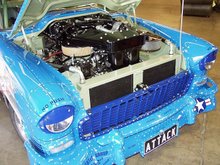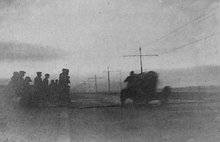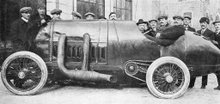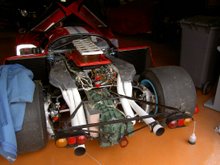
At last! Some car stuff eh?
Well no-one has actually complained about my non-Fulvia posts, and despite my steadily increasing readership, it has all been really rather quiet, I do appreciate your comments and of course comments are essential to keep the Blog world alive.
Anyway, this all concerns my pre-Christmas series about knock.
Whilst naturally, I concentrated on ignition matters (I would be interested to hear from anyone who has bought the Meca system) there is another side to the knock question. This of course concerns fuelling: lean mixture when things are critical, again point of maximum torque, high ambient temperatures full throttle under heavy load e.g. in a hill-climb, can be disastrous and lead if not actually to detonation, certainly burned pistons and exhaust valves are more than likely.
Now for those of you with standard cars in good condition, there is unlikely to be anything to worry about, but start developing and all hell can be let loose. Improved gas flow - which includes improved exhaust manifolds - modified camshafts and so on are all ultimately intended to improve volumetric efficiency and as I pointed out, this means an effectively higher compression ratio which requires changes to the advance curve, but also means more air which in turn means that more fuel is required for optimum performance.
The carburettor is an amazing invention being technically quite simple yet it is able to demonstrate considerable flexibility - in simple terms, more "suck" = more fuel. However this is not the approach for a perfectly developed engine. The fuelling, just like the ignition curve (and they relate to each other) should be optimised.
And this is where I refer to the picture at the top of the page. This is the JAW wide-band oxygen sensor: fuelling is assessed the modern way: by measuring the proportion of oxygen in the exhaust gases; this proportion is referred to as "Lambda" - hence the Lambda sensors found on many modern cars. This sensor is available as a kit and is very cheap.
Here is the link to the company's website; it is in English and I am sure that you will find it interesting.
Let me know what you think eh?
À bientôt
Anyway, this all concerns my pre-Christmas series about knock.
Whilst naturally, I concentrated on ignition matters (I would be interested to hear from anyone who has bought the Meca system) there is another side to the knock question. This of course concerns fuelling: lean mixture when things are critical, again point of maximum torque, high ambient temperatures full throttle under heavy load e.g. in a hill-climb, can be disastrous and lead if not actually to detonation, certainly burned pistons and exhaust valves are more than likely.
Now for those of you with standard cars in good condition, there is unlikely to be anything to worry about, but start developing and all hell can be let loose. Improved gas flow - which includes improved exhaust manifolds - modified camshafts and so on are all ultimately intended to improve volumetric efficiency and as I pointed out, this means an effectively higher compression ratio which requires changes to the advance curve, but also means more air which in turn means that more fuel is required for optimum performance.
The carburettor is an amazing invention being technically quite simple yet it is able to demonstrate considerable flexibility - in simple terms, more "suck" = more fuel. However this is not the approach for a perfectly developed engine. The fuelling, just like the ignition curve (and they relate to each other) should be optimised.
And this is where I refer to the picture at the top of the page. This is the JAW wide-band oxygen sensor: fuelling is assessed the modern way: by measuring the proportion of oxygen in the exhaust gases; this proportion is referred to as "Lambda" - hence the Lambda sensors found on many modern cars. This sensor is available as a kit and is very cheap.
Here is the link to the company's website; it is in English and I am sure that you will find it interesting.
Let me know what you think eh?
À bientôt











No comments:
Post a Comment